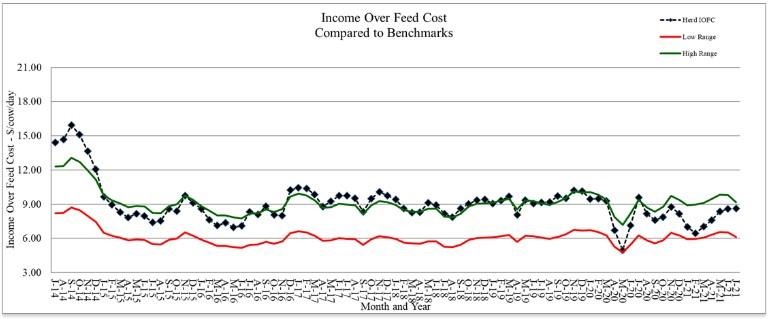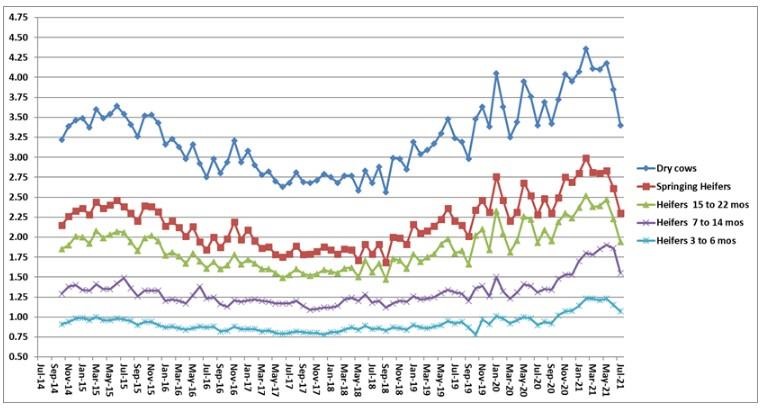By Virginia A. Ishler
Production perspective:
Water is a precious resource that many people take for granted. Pennsylvania is fortunate to have adequate rainfall compared to other top dairy producing states. Even though Pennsylvania ranks seventh in dairy production, it is the second highest in average rainfall: California, 21 inches; Wisconsin, 33 inches; Idaho, 18 inches; New York, 47 inches; Texas, 27 inches; Michigan, 34 inches; and Pennsylvania, 44 inches. The dairy industry is very delicate right now due to high feed costs and milk prices that limit the margin needed to cash flow. Looking toward the future and considering the severe droughts the west has been experiencing, water is probably going to be a key factor influencing which dairy states remain viable.
Quality and quantity are not only important for home-raised feed production but for assessing water resources as well. Water is integral to the success of the whole farm system. Except for the rare occurrence of a severe drought, water quantity is typically not a concern. Water quantity applies to drinking water for animals, and the amount of water used in the milking system. For a milking herd of 250 cows using a parlor system, water usage of 15,000 gallons per day is not unusual. Having adequate rainfall alleviates the need to irrigate fields to grow water intensive crops like corn, soybeans, and alfalfa. This gives Pennsylvania an advantage compared to other states with water use restrictions.
The emphasis in the northeast has been on water quality and its impact on human drinking water, aquatic life, and recreational use. In rural communities well water is a key source and depending on the geographical area has the potential of impairment that affects animal performance. Water testing annually to assess quality parameters should be part of any feeding management strategy.
Unfortunately, there is limited research on water quality issues and their effect on milk production and animal health. Based on field studies conducted over the past decades at Penn State, it is the aesthetic pollutants like iron, manganese, and hydrogen sulfide, that cause problems in dairy herds. These elements cause taste or odor issues resulting in reduced water intake and ultimately milk production. Other pollutants, such as nitrates or heavy metals, can cause health problems in dairy cattle.
The Extension water team conducted a project on 243 dairy farms from 41 counties across Pennsylvania. They found that 26% of the farm water supplies had at least one water quality issue. Average milk production for these farms was 56 pounds per cow per day, compared to 62 pounds on the farms with good water quality. None of the farms with high milk production (above 75 pounds of milk per cow per day) had existing water quality problems while 32% of farms with low milk production (below 50 pounds of milk per cow) had at least one potential water quality problem. The challenge is water quality issues are rarely the sole problem related to animal performance. It is usually a combination of management practices coupled with water that is causing the concern. This is one reason it’s difficult to make a direct connection between water and production or health problems.
Water quality and quantity are important components of a dairy operation. It isn’t until a problem occurs that their impact on the financial health of the business is realized. The Pennsylvania dairy industry is well positioned for the future because of an ample water supply. Implementing best management practices on the farm regarding water quality can maintain or improve animal performance, which should help milk income.
Economic perspective:
Monitoring must include an economic component to determine if a management strategy is working or not. For the lactating cows, income over feed cost is a good way to check that feed costs are in line with the level of milk production. Starting with July 2014’s milk price, income over feed cost was calculated using average intake and production for the last six years from the Penn State dairy herd. The ration contained 63% forage consisting of corn silage, haylage, and hay. The concentrate portion included corn grain, candy meal, sugar, canola meal, roasted soybeans, Optigen, and a mineral vitamin mix. All market prices were used.
Also included are the feed costs for dry cows, springing heifers, pregnant heifers, and growing heifers. The rations reflect what has been fed to these animal groups at the Penn State dairy herd. All market prices were used.
Income over feed cost using standardized rations and production data from the Penn State dairy herd.

Note: July’s Penn State milk price: $18.86/cwt; feed cost/cow: $6.65; average milk production: 81 lbs.
Feed cost/non-lactating animal/day.

Source : psu.edu